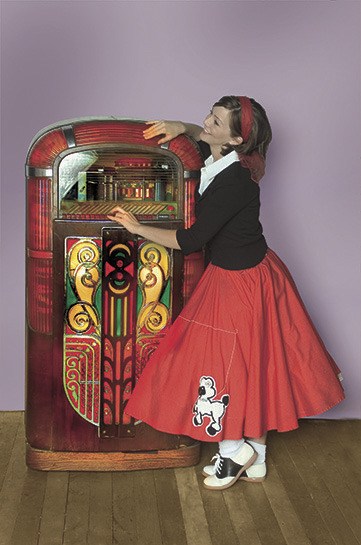It was a time of poodle skirts, drive in burger joints, life in the suburbs and a new kind of music that would come to define an era.
The blended harmonies and simple lyrics of classic doo-wop will be performed by The Alley Cats at Orcas Center, bringing a little retro joy to the main stage.
“They do all the classic hits of the ‘50s and ‘60s,” said Executive Director Kara O’Toole. “You are hard-pressed not to sing along … We often get requests for barbershop quartets and music for baby boomers, so this is my gift to them.”
Their Orcas performance is on Thursday, March 6 at 7:30 p.m. Tickets are $25, $19 for Orcas Center members and $11 for students. Visit www.orcascenter.org or call 376-ACT1.
The band members will present a music education assembly in the elementary school that same day.
The Alley Cats, touted as “America’s Premiere Doo-Wop Group” bring their own contemporary style to the classics. They’ve appeared on TV and radio shows and performed at arts centers, schools, and even a USO show aboard an aircraft carrier welcoming home the troops from Iraq. The Cats have shared the stage with Chubby Checker, and The Beach Boys and are currently the opening act for Jay Leno in Las Vegas.
Doo-wop music features at least four people singing different harmonic parts (lead, bass, tenor, baritone) at the same time. Fans of the genre say its beauty is in the harmonics.
The songs are characterized by nonsense syllables like “bitty, bitty, boom, bop” and “whoa, whoa” and simple music and lyrics with limited instrumentation.
According to the documentary film “Life Could be a Dream,” the genesis of doo-wop began with African slaves in America who used music to pass the time and communicate with each other.
“Great songs evolved from the plantation and cotton fields,” said commentators in the film. “It also has roots in gospel and singing in church.”
In 1948, Sonny Til and the Orioles changed the face of rhythm and blues forever. He was idolized for his singing and good looks and developed a doo-wop style that other groups began to emulate. Then, in 1950, The Ravens debuted “Count Every Star,” which had a pronounced bass line. That tune officially ushered in a new era of music. The year 1955 saw the up tempo song “Why do Fools Fall in Love?” by Frankie Lymon and the Teenagers, which crossed over into the pop charts and inspired a lot of dancing.
And the Alley Cats are carrying on that tradition. The group began at Fullerton College in California, and landed their first professional gig at Disneyland’s “Blast to the Past.”
The group has several members, allowing them to perform multiple shows on the same day. All of the original members are still performing with the group, and most of the Cats have been in the band for more than 10 years.
For more information about the group, visit www.thealleycats.com.



